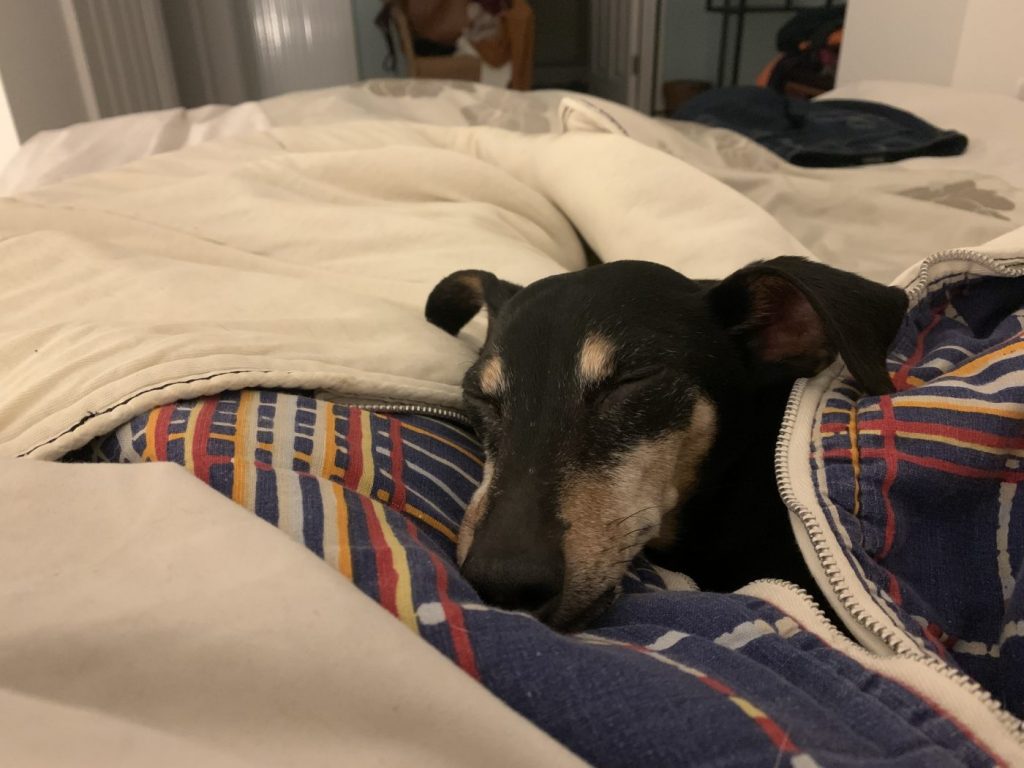December was emotionally trying, leaving me a tad broken — I may have employed concerning amounts of Celine Dion and cake to cope. And just when I was ready to pack my bags for Mars, I suffered another blow. It involved a ruptured cyst and a world of pain. I call it “The Mysterious Case of the Exploding Cyst.”
The mysterious aspect of this story is that by the time I had a scan — spoiler alert — the little idiot had sorted himself out. And by idiot, I mean the cyst. That cyst was mean. More than once it knocked me to my knees in excruciating pain.
I am used to sharp tugs of pain since my most recent surgery. But those flare-ups generally dissipate within an hour of rest. This time, the discomfort went on. I would go to bed in pain. I would wake up and there it was, cutting through me like a knife. Staying horizontal made no difference. To add to the misery, I began to bleed. On the third day, I went to see my general practitioner.
My doctor prodded me extensively to rule out appendicitis. She drew blood and booked me for a scan. She also prescribed codeine for the pain, which I enthusiastically accepted. Within two days, the discomfort had subsided.
Two weeks after seeing my doctor, I finally had the scan. The technician explained that because I had bled, it was likely my painful episode was because of a burst cyst. By then, this cyst had happily left the building.

This was news to me. At my checkup months earlier, there had been nothing worth reporting. Truthfully, there is no way to know with certainty that it was a ruptured cyst. But it did tick all the boxes. It certainly felt different than anything I have ever experienced.
I wish there had been a way to have known about it, or to have prevented the pain and the scary episode. To be honest, I probably could have done with more urgent care. But as a seasoned endometriosis patient, I knew that going to emergency services would have been a game of luck. Finding someone with the time, energy, and resources to give me a full checkup is asking a lot from our strained healthcare system. I was lucky it was a small cyst with no further complications.
The moral of the story? When something doesn’t feel right, go to the doctor.
Ovarian cysts are common for endometriosis patients.
Ruptured cysts and misbehaving polyps are common among endometriosis patients. Most of these cysts will simply live in us quite happily, but it is worth keeping an eye on them and logging any changes. They generally go unnoticed unless spotted on a scan. Or if they suddenly rupture.
It wasn’t the best way to end the year, but I am recovered and happy to report that there will be no more misbehaving cysts for a while. At least I hope so.
***
Note: Endometriosis News is strictly a news and information website about the disease. It does not provide medical advice, diagnosis, or treatment. This content is not intended to be a substitute for professional medical advice, diagnosis, or treatment. Always seek the advice of your physician or other qualified health provider with any questions you may have regarding a medical condition. Never disregard professional medical advice or delay in seeking it because of something you have read on this website. The opinions expressed in this column are not those of Endometriosis News or its parent company, BioNews Services, and are intended to spark discussion about issues pertaining to endometriosis.

